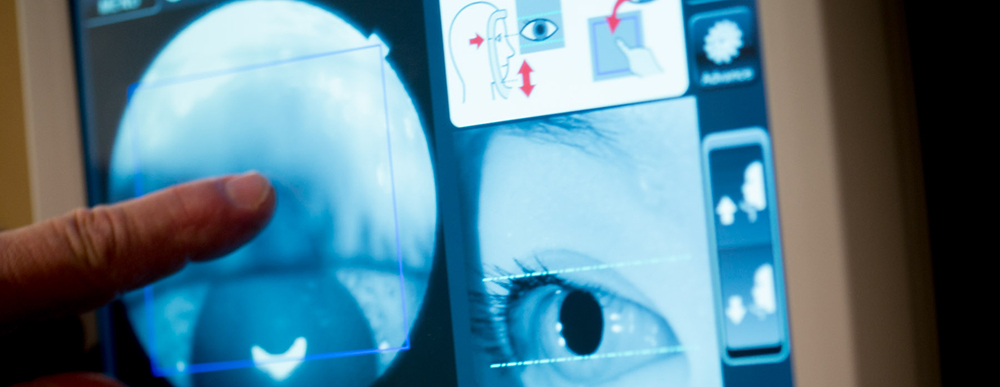Innovative screening programs by University of Wisconsin vision researchers are reducing the leading cause of blindness in Wisconsin working-age adults.
Jeri Shultis knew something was wrong. He had driven south from Mauston, Wisconsin to Madison to watch his grandson wrestle at the state tournament, but he was struggling to focus on the mat.
“My eyes were just so blurry all day,” Shultis recalled. “I made an appointment soon after, and the optometrist asked me if I had ever been diagnosed with diabetes.”
Shultis never had, but follow-up testing revealed that he did indeed have the disease. In 2016, he started diabetes treatment at Mile Bluff Medical Center, a UW Health affiliate, in Mauston. Part of that treatment included regular screenings to monitor his eye health.
Approximately 423,000 people in Wisconsin have been diagnosed with diabetes (9.1% of the adult population). Like Shultis, an additional 135,000 people in the state have diabetes but don’t know it, which puts them at risk for complications. Diabetes can cause eye disease, particularly a condition called diabetic retinopathy. High blood sugar damages the tiny blood vessels in the retina, which can cause scarring and ultimately, retinal detachment and blindness. Diabetic retinopathy is the leading cause of blindness among working-age adults in Wisconsin, but early diagnosis and treatment decrease the risk of vision loss by 90%. Currently, fewer than 70,000 Wisconsinites with diabetes receive yearly eye screening.
Researchers in the University of Wisconsin School of Medicine and Public Health’s Department of Ophthalmology and Visual Sciences are working to change that.
